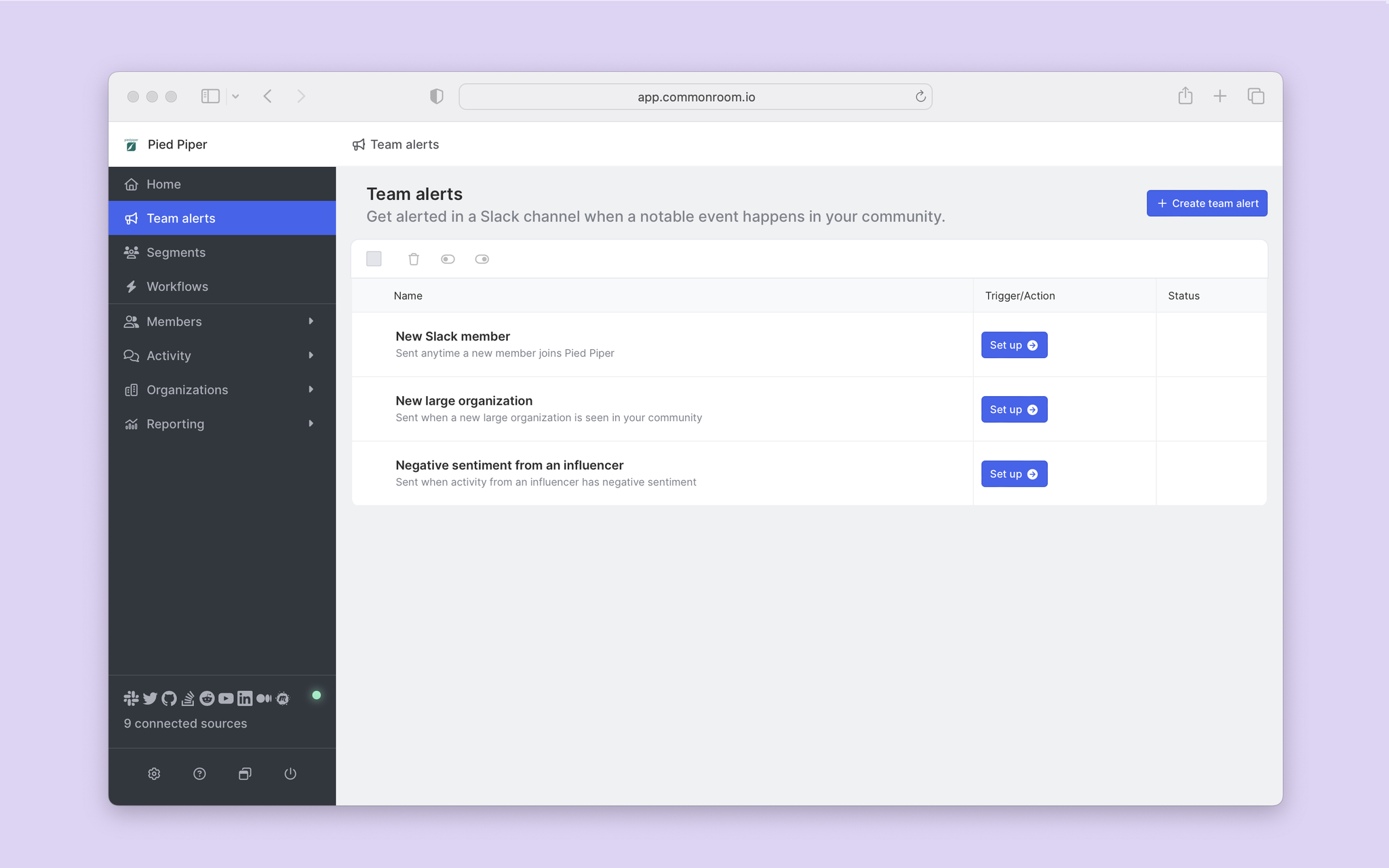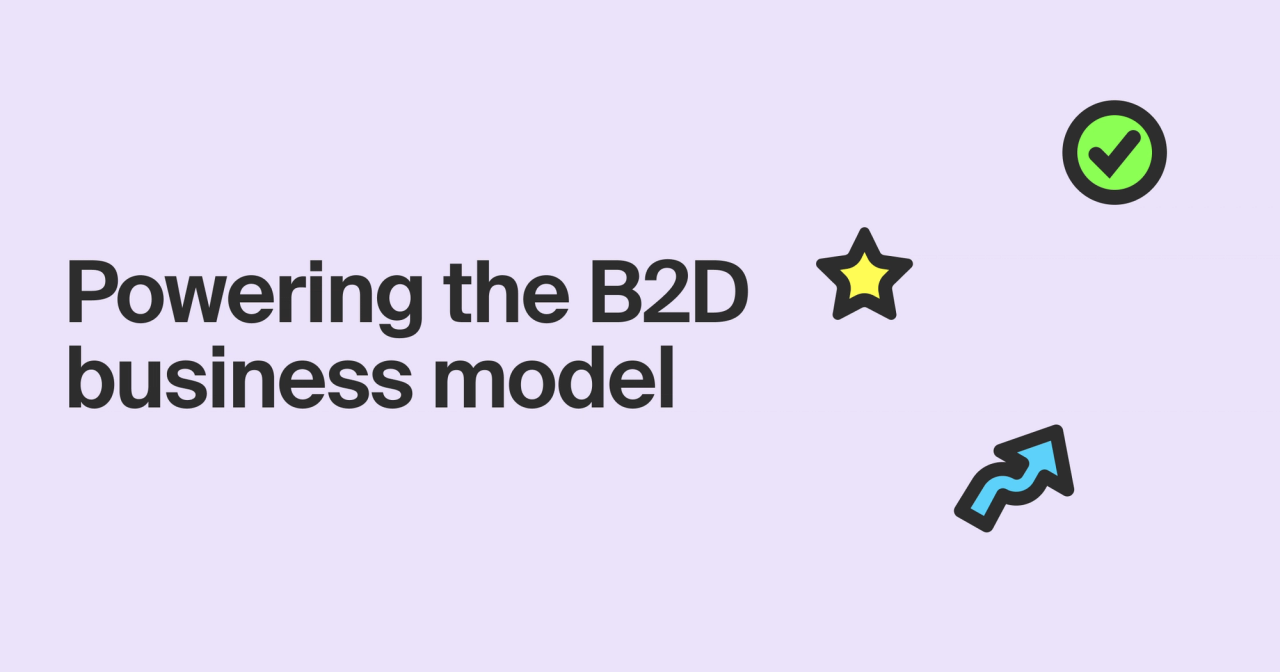The business-to-developer (B2D) business model is a bundle of contradictions.
It shares similarities with business-to-consumer (B2C) and business-to-business (B2B) models—and it often pulls directly from the product-led growth (PLG) playbook—but it’s fundamentally different.
It makes sense—developers are multifaceted, as well.
They’re known for shunning traditional marketing and sales, but they’re also known for being early adopters who will find and champion the latest technologies.
It all means organizations have to work twice as hard to find a B2D strategy that works.
Keep reading to learn:
- Why the B2D business model is on the rise
- How B2D compares to other business models
- What the most successful B2D companies have in common
The rise of the B2D model (or why sales teams are trying to win over developers)
B2D—which, when you get right down to it, is the process of selling to developers—isn’t new. But it’s certainly growing rapidly.
More and more companies are creating products aimed directly at developer audiences, which makes devs more integral to the buying process. Today 65% of developers say they have influence over technology purchases at their companies.
And this makes them the ideal entry point for dev-focused sales teams.
Here’s how it works—in theory, at least.
Devs give a product a test drive via an open-source offering, free trial, or freemium version. Then—if they send out the right intent signals and their organizations are the right fit—sales teams swoop in to sell them (and their bosses) on the features and managed services included in the paid version of the product.
What's the diff between B2D vs. B2B vs. B2C?
B2D (Business-to-Developer): Targets software developers and technical teams, emphasizing product usability, API integrations, and community-driven growth.
B2B (Business-to-Business): Involves selling products or services to other businesses, focusing on long sales cycles, complex decision-making, and tailored solutions to business needs.
B2C (Business-to-Consumer): Focuses on reaching individual consumers with an emphasis on emotional appeal, quick purchasing decisions, and broad audience engagement.
You can think of B2D as the natural evolution of the business models that came before it: B2C and B2B.
The business-to-consumer model is all about selling directly to end users. In some ways, this is similar to B2D—sales reps are trying to get their foot in the door with the people who actually use their products.
Meanwhile, the business-to-business model is all about selling to specific decision-makers within an organization. Like with B2D, this requires personalized outreach and an eye on winning over other members of the buying committee.
Which brings us to the business-to-developer model, where sellers try to wow end users and multi-thread their way to the people who hold the purse strings and approve new technologies. Devs have more influence over buying decisions, but they’re not often budget holders.
This makes B2D a hybrid business model. And product-led growth—as in, using your product as the main customer acquisition channel—is one of its cornerstones, often in the form of open-source software.
Because even more than other sales personas, developers want to try before they buy.
The truth about selling to developers
Understanding how B2D is supposed to work is one thing. Making it work is something else entirely.
Developers don’t want to be sold to—at least not in the traditional way. Like most modern buyers, they’d much rather get their hands on your product than listen to a pitch.
If you’re lucky, this means you get access to product usage data. It’s only one part of the equation—and getting this data into sellers’ hands in a scalable, repeatable way isn’t easy—but it can reveal valuable intent signals and make it easier to hone in on engaged opportunities for a product-led sales strategy.
Not so for most commercial open-source companies. Unless these orgs have some kind of technical workaround that shows them how people are accessing and using their software, sellers are blind to product usage.
Instead, they resort to crawling through GitHub repositories and other dark-funnel channels in search of buyer intent. Then they spend hours researching opportunities to see who they’re looking at, where they work, and whether they’re the right fit.
Even then, sellers are left with limited insights.
Now the good news: Lots of B2D sales teams have found a solution.
What the best B2D strategies have in common
Here’s how B2D leaders uncover and close more deals:
They leverage ecosystem signals
Devs trust other devs a lot more than they trust sales reps.
It’s why there are so many thriving developer communities—and why developer relations is a critical business function for many companies.
Smart sellers know that dev communities—whether they’re company-owned ones on Slack and Discord or unaffiliated ones spread across GitHub, Stack Overflow, and Reddit—are where products get discovered, evaluated, and championed.
That’s why organizations such as Replit use community channels to surface potential customers, deliver necessary support, and signal boost product advocates.
🎤 “We want to find users to shine the spotlight on, and Common Room helps us surface those users.”
—Lena Vu Sawyer, Head of Community at Replit
They connect data to real people
Open-source and product-led growth strategies are great for getting your product directly in developers’ hands. Not so much for telling you who those developers are or why you should care.
Even if you can spot buyer intent, it’s only one input. Sales teams also need to make sure users are a solid fit.
And that requires visibility into the individuals and organizations behind anonymous buying signals.
For example, ProjectDiscovery focuses on tying user activity to user identity in order to surface enterprise sales opportunities.
🎤 “The most valuable discovery that Common Room helped us make was understanding which large organizations have been using and are most engaged with our tools.”
—Brendan O’Leary, Head of Community at ProjectDiscovery
They prioritize every opportunity
Spray-and-pray sales is a waste of time. That goes double when you’re talking to developers.
Generic outreach and hyperbolic sales spiels won’t convince anyone. Besides, end users aren’t always buyers, and sales teams want to focus on high-value contracts, not single-serve purchases.
Time is a precious commodity, so sellers have to stack rank which deals to go after. Are they seeing signals from a single dev or an entire department? Does the user’s tech stack line up with the product? Sales teams have to answer questions like these to concentrate on the deals that will really move the needle.
That’s why Loft Labs filters and tags opportunities based on specific criteria that indicate product and customer fit.
🎤 “It comes together in a solution like Common Room. We have all this data, and Common Room gives us a way to stay alerted to activity and engage the right people at the right time.”
—Dan Miller, GTM Advisor at Loft Labs
They get surgical with their outreach
Nobody wants to buy vaporware. Developers are rightfully skeptical of buzzwords and branding.
That’s why the best of the B2D bunch focus on delivering value first—and delivering it where it matters.
For instance, Temporal monitors product users across digital channels to understand what they’re looking for and where they are in the customer journey.
Once the sales team understands how their product can help someone solve a specific problem, they reach out to have a value-based conversation on that person’s channel of choice.
🎤 “With Common Room, you actually figure out where they're being active. You know if they're using Slack or if they're using LinkedIn or if they're using a community forum, and with that, you can make your outreach a lot more personalized.”
—Gozie Nwachukwu, Head of Sales Development at Temporal
How to power your B2D business model with Common Room
Common Room gives B2D sales teams superpowers.
Dozens of natively built and fully managed integrations help you centralize, deanonymize, and enrich all your data—from cross-channel digital interactions to activity in your product to the customer records living in your CRM.
This helps you create a unified profile for every developer—their job title, their work history, contact information, and much more. Just as importantly, it lets you see what devs are saying, what they’re doing, and where.
🎤 “Common Room gives me a daily feed of all the prospects I want to engage from multiple channels all in one place. It saves me so much time and energy as far as prospecting and organizing my day.”
—Gozie Nwachukwu, Head of Sales Development at Temporal

Find the signal in the noise with easy-to-use filters and tags. Quickly qualify devs based on their attributes and actions or automatically zero in on opportunities that match your ideal customer profile.
This helps you focus your efforts on the right opportunities—be it economic buyers, product-qualified leads, or ideal personas.
🎤 “We know which attributes make someone a great fit for Replit. Before Common Room, I wasn't able to find and build relationships with these people."
—Lena Vu Sawyer, Head of Community at Replit

Create dynamic segments for people and their companies based on key criteria and turn them into task lists with the click of a button. You can send off Slack DMs, add contacts to personalized Outreach sequences, sync your records with Salesforce, and more—all from the same place.
🎤 “[Customers] adopt us because we work for their needs and their workflows—and enterprises may be willing to pay for a premium version tailored to their organization. Common Room allows us to spot those opportunities and follow up accordingly.”
—Brendan O’Leary, Head of Community at ProjectDiscovery

And make sure you’re always ready to act with automated team alerts that let you customize real-time notifications about dev activity in the channels where you already work.
🎤 “Now we have a common place—Common Room—to come together and drive every function that we have. It serves as the foundation for intelligent automation.”
—Dan Miller, GTM Advisor at Loft Labs

B2D sales can seem complicated, but the primary objective is the same as any other business model: Reach the right people, with the right message, at the right time and place.
Common Room helps you do all that and then some.
Boost your B2D wins with Common Room
Ready to see how Common Room helps you improve your business-to-developer sales strategy?

